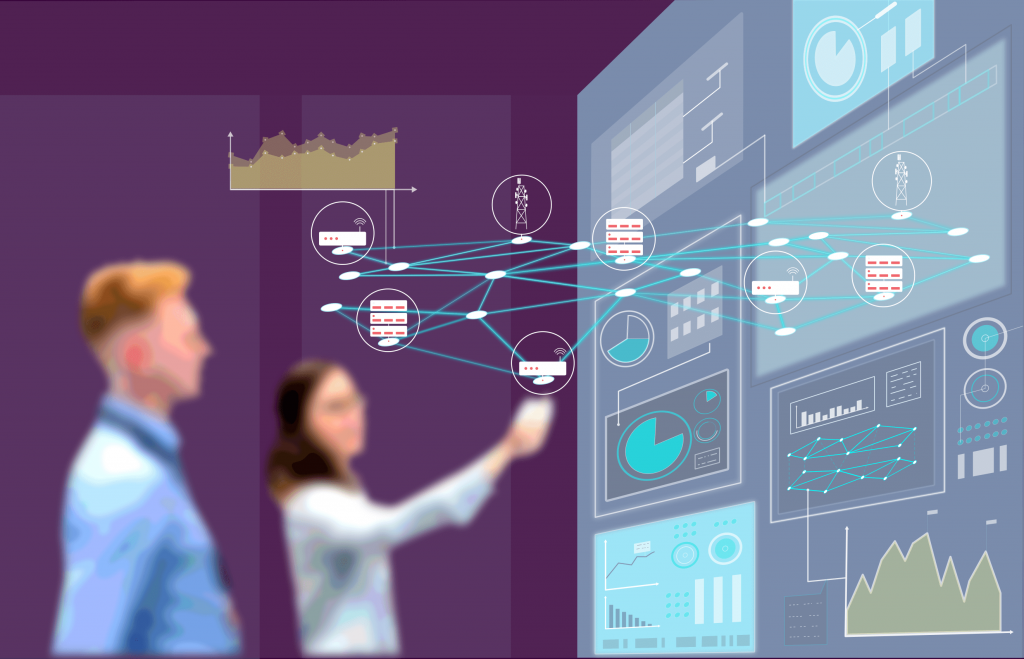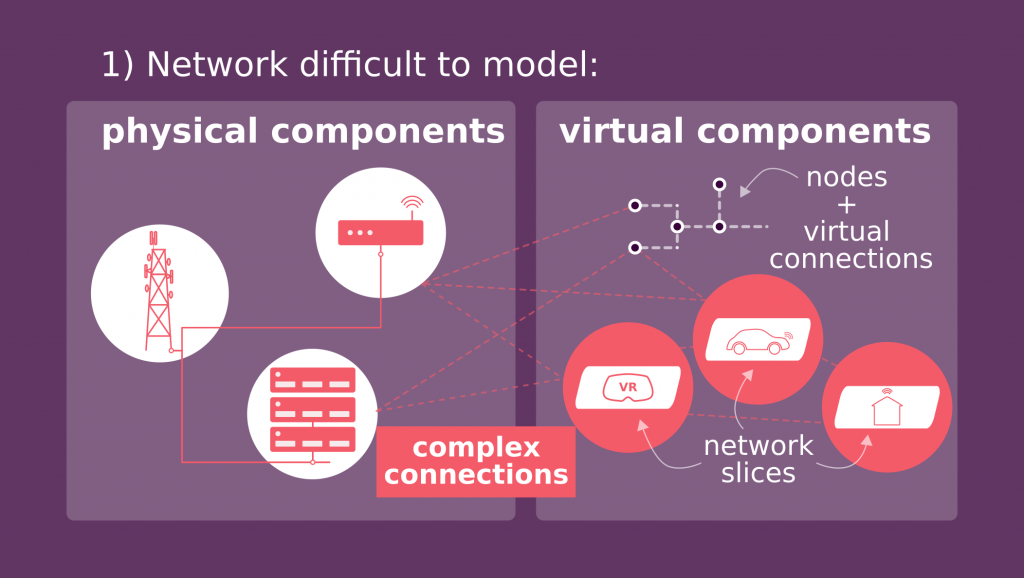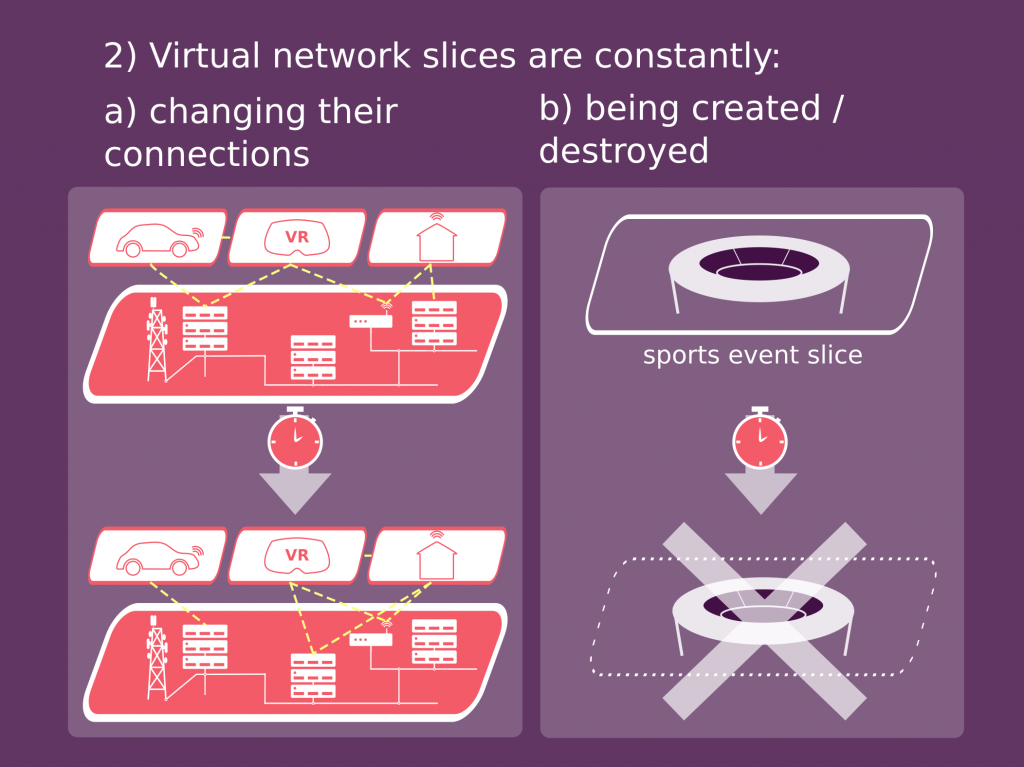Designing a virtual replica of the network slicing system (2020)
Bitesize summary
Paper: A Graph Neural Network-based Digital Twin for Network Slicing Management (2020)
key themes: digital twin technology, graph neural networks,
Problem: Network management in 5G (and beyond 5G – B5G) networks will be really challenging, since the network will be complex, with many virtual operations and connections. The network providers also have strict requirements for the quality of the service they provide.
Proposed solution: Creating a computer model that is an almost identical, virtual replica of the actual network system, known as a digital twin. The network operators can monitor the network using the digital twin, and test out different scenarios or techniques on the twin before using them in the real network.

More details
In the network slicing paper summaries, we saw how the research team were using AI and machine learning techniques to share out resources amongst virtual slices in the 5G network (and this is applicable to beyond 5G (B5G) networks too). This was a complex task, as there were many users and many virtual network components to deal with, even within one slice.
In this work, the team are ‘zooming out’ and looking at the network at a larger scale, and trying to make a digital twin (or rather: virtual replica) of the network at this scale. They are considering the many possible slices in the network and connections within each slice, along with the interactions between the slices (in particular: how they share the physical infrastructure). It’s important to highlight that the work of the previous papers – the problem of working out how network resources can be shared out – is not included here. The main focus of the work is: how can we make a digital twin for such a complex network?
You might wonder what makes the network so complex at this scale, if we don’t need to worry about the individual users and their constantly changing requirements. The main complexity comes from the fact that the network is made up of both physical and virtual components. The physical components are servers, cable connections, routers, and so on, whereas the virtual components are the network slices and all the virtual nodes and connections, which share the physical infrastructure.

This is where the real challenge lies in making a network digital twin: the virtual components, which are constantly changing their connections to the physical network. In addition, network slices are being created and destroyed all the time – they might be set up to handle a large crowd of people at a football game or festival, or they might provide a dedicated low-latency slice for critical services to use during an emergency. They might, on the other hand, be more permanently set up for shopping centres or University campuses.

Analogy with a typical digital twin (buildings)
Digital twins are usually virtual representations of physical objects or systems, not hybrid virtual and physical systems. If you think of a digital twin of a typical engineering system, like a building, the main physical systems might be the ventilation and air conditioning systems, radiators, and lighting. Each of these will have sensors associated with them; for air quality, temperature, and light levels, and are thus producing lots of useful data. The digital twin could take this data in real time to represent the various demands and changes in the system. It could even combine this live data with anticipated numbers of people using the building and weather data, and use machine learning techniques to make predictions and work out how to make the building’s energy use more efficient. It could even be used to understand how people move through or around the building, to improve traffic flow.
The digital twin for the 5G / B5G network proposed in this research paper would also use all the useful live data produced by the network, but instead of just having fixed physical infrastructure (like cables, servers, or routers, like the ventilation systems, radiators or lights in the building), there are the various network slices appearing, disappearing, and connecting to different physical nodes in the system at all times, so it’s significantly more complex.

This constantly-changing virtual array of network slices, with virtual connections between real and other virtual components, makes it a much more challenging problem for creating a digital twin, compared to making a digital twin for a physical object. This complex system is, however, a great application for machine learning. As we saw in the previous paper summaries, deep learning is ideal for learning directly from data, as well as understanding connections between the data that are not easily apparent. The research team in this case use graph neural networks (GNN) to construct and run the digital twin, which is a type of deep learning technique where the data is literally represented in a nodal network or ‘graph’ form (see images). This is perfect for representing networks and the connections between different points or ‘nodes’ directly, instead of in matrices (multi-dimensional tables) of data.
This is one of the first steps towards making a digital twin for the 5G network, but it will still take a lot more research and development to make a fully-functioning network digital twin. In addition, it’s likely that different components of the network will have their own separate digital twins, which are connected together as needed – for example, there may be a digital twin (or many) for the network management, another for cell towers, new products or services, or even the customers. All these digital twins will be replicas of very different systems, but this work could help to guide how those digital twins can be constructed.
